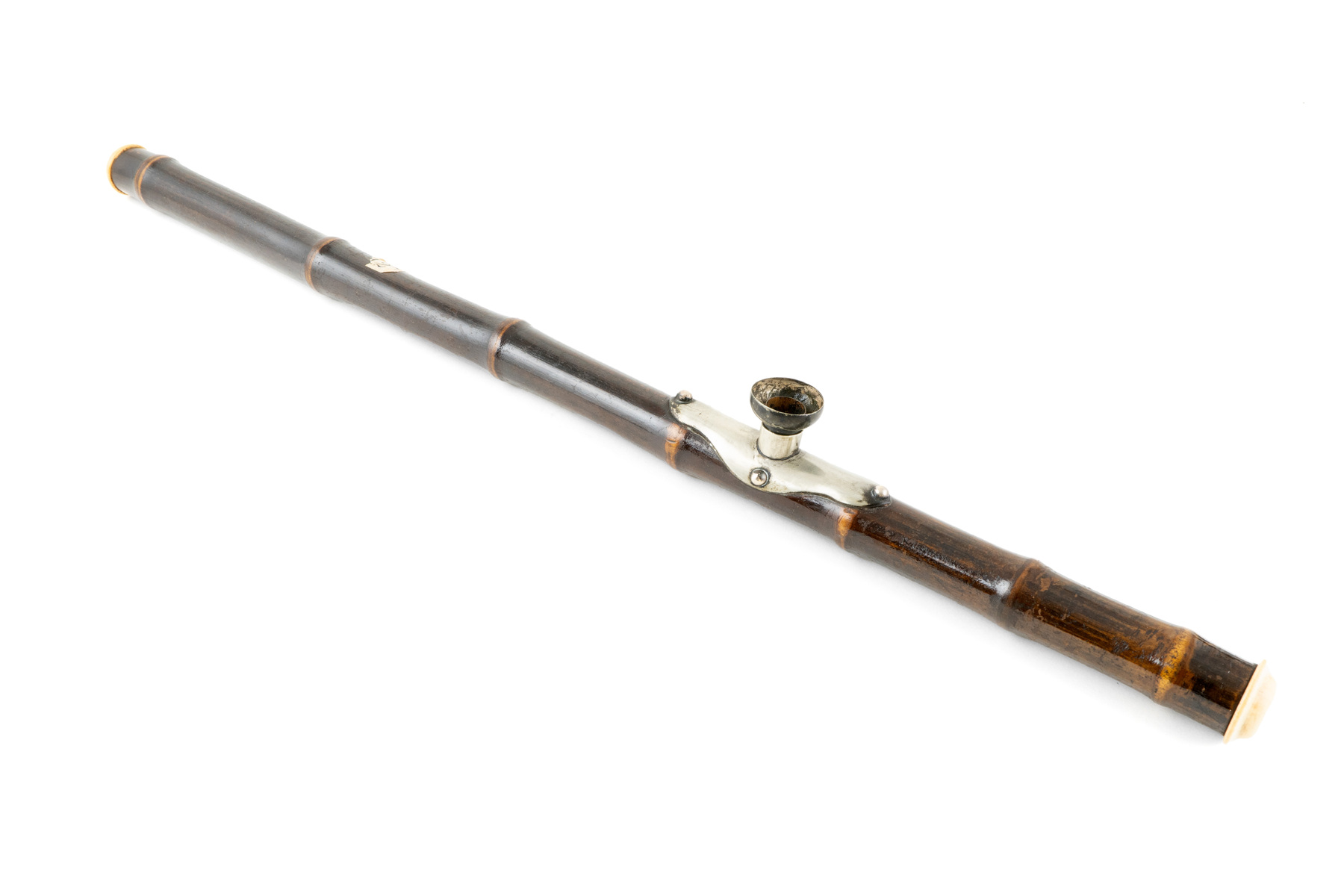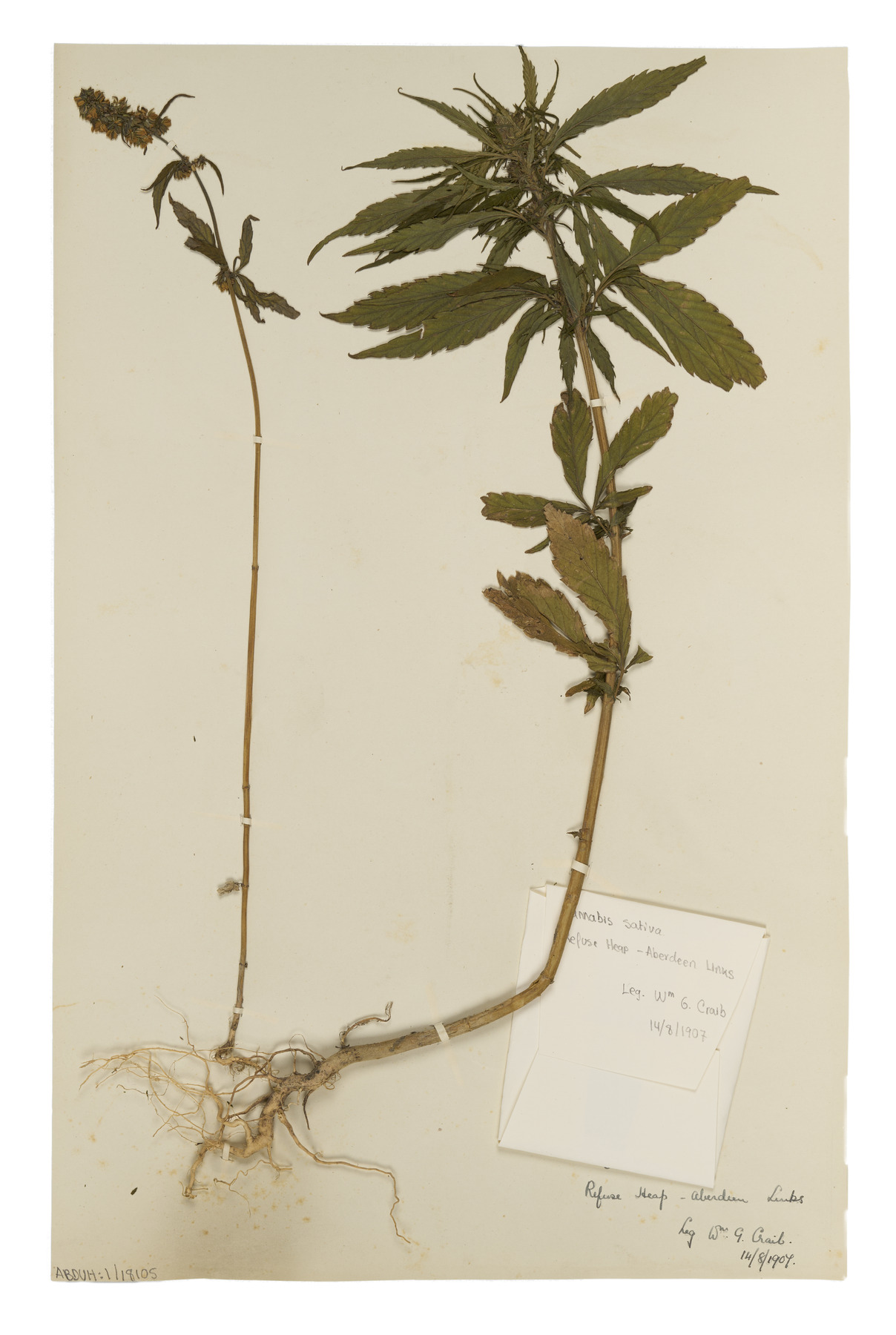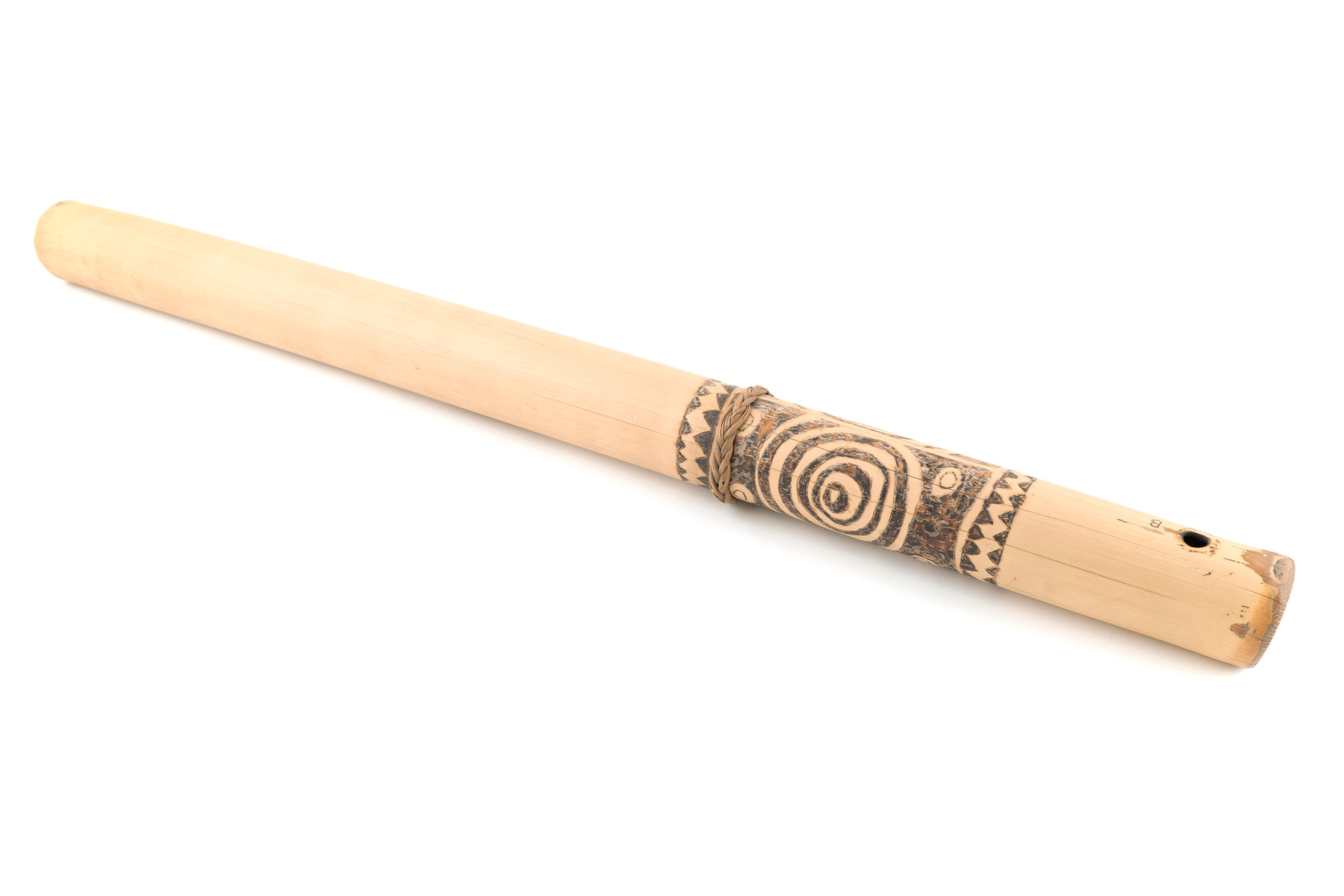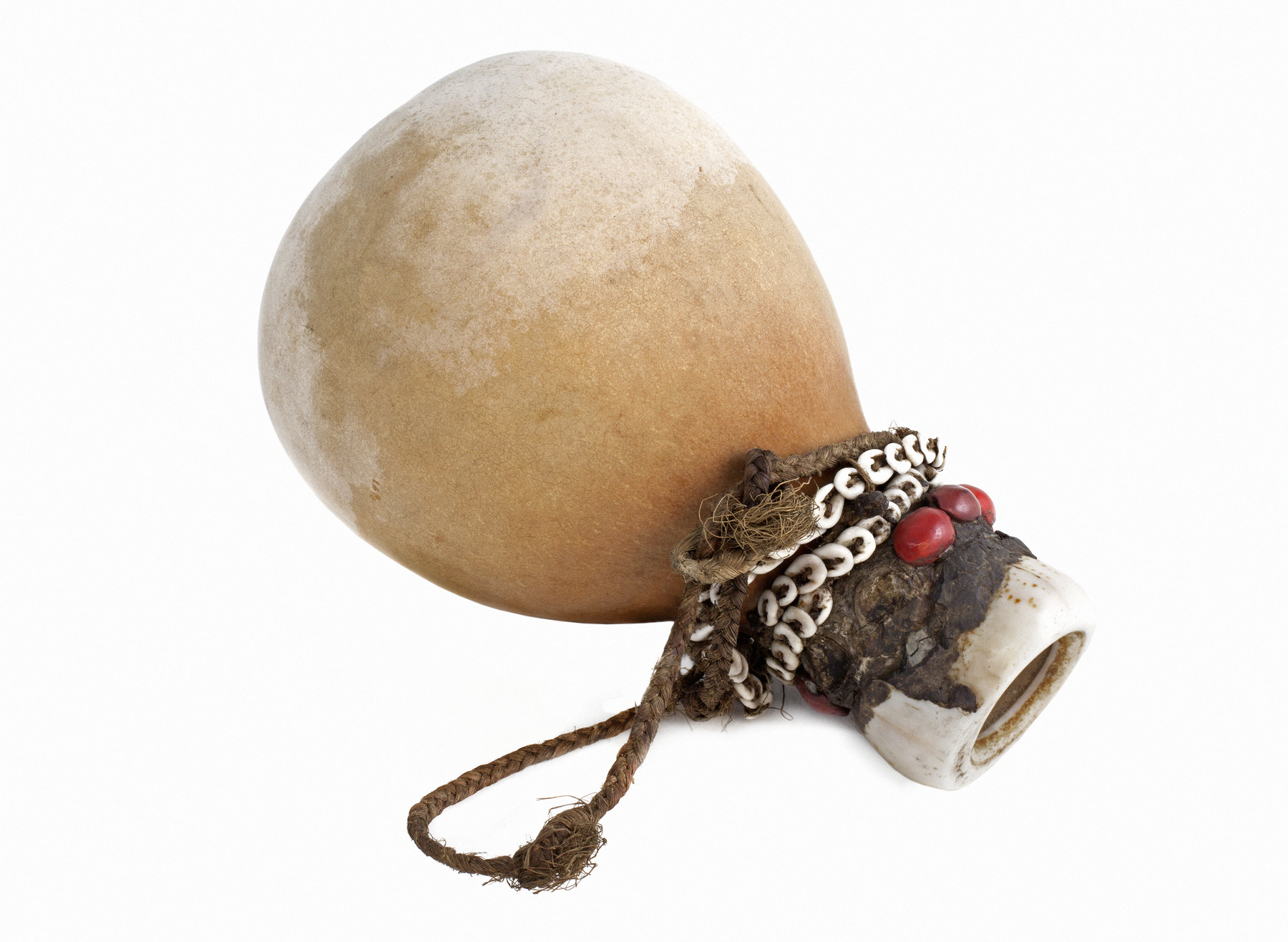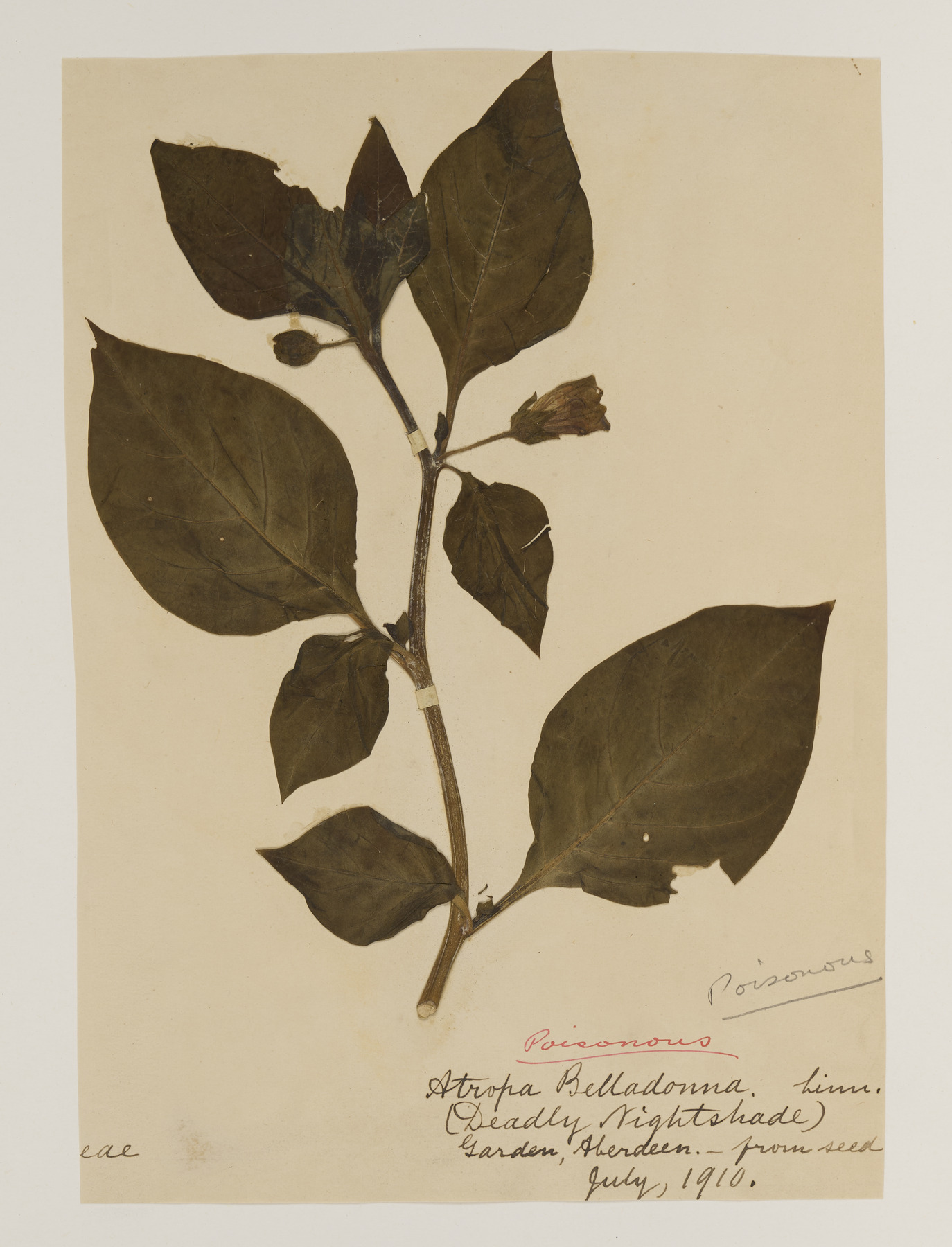Poisons for Pleasure and Beauty
There is a fine line between pleasure and poison.
Some poisonous substances are commonly used for recreation and for the sake of appearance, with their potentially harmful side effects being overlooked. Some substances have health risks that were not fully understood or known about in historic times. These can take the form of intoxicating or stimulating substances that can alter someone’s mental state for their enjoyment. These substances can be harmful, especially if not used in moderation. The risk of these poisons relates to how regularly they are used over a prolonged duration of time, with higher dosages carrying the risk of health issues and addiction.

Opium pipe
This nineteenth century pipe is made of lacquered bamboo and was used to smoke opium processed from a poppy plant. Whilst raw opium can be eaten, smoking it provides a quicker and more powerful result. Opium has been used medicinally and recreationally for at least five thousand years, being especially popular across Europe and Asia. Consuming opium was legal in the UK until 1920.
ABDUA:60912

Bottle of whisky
This 30 year old malt whisky was produced in Aberdeen. The consumption and distilling of whisky has been an important part of Scottish culture for a long time. However, as with any other type of alcohol, drinking it in large quantities over a short period of time can cause alcohol poisoning, which can result in vomiting, seizures, brain damage or even death. Ingesting large amounts of alcohol over a long period of time can also cause damage to the nervous system, brain, heart, pancreas and liver.
ABDUA:18042

Cannabis sativa
Historically categorised as a ‘poison’ for its effects rather than lethality, cannabis has been used since around five thousand years ago, initially for supposed healing and therapeutic properties. Introduced to Western medicine in the 19th century, it has undergone various stages of legalisation and criminalisation worldwide for recreational use. The effects of cannabis vary depending on the dosage, scaling from minor alterations to the senses to a risk of developing psychosis and delusions caused by regular cannabis use.
ABDUH:1/18105

Tobacco pipe
After years of being considered harmless, it is now known that tobacco can be a highly addictive substance that can have severe long-term effects, especially when used on a regular basis. Effects can include heart disease and an increased chance of strokes and cancer. These health issues are due to the large amount of toxic substances including carcinogens that are found in tobacco. The smoking of this plant using pipes such as this one has been widely used across different cultures, considered to have spiritual significance to some, or medicinal properties to others.
ABDUA:1680

Betel gourd container
This gourd container, originally from Papua New Guinea and made during the 19th century, was used to store lime, an ingredient used for betel chewing. Betel nut is a psychoactive substance, which creates feelings of euphoria and increased energy. However regular betel chewing can create a dependency and there can be long term health effects ranging from mouth ulcers and gum disease to oral cancers and heart disease.
ABDUA:1665

Belladonna
Also known as Deadly Nightshade, Belladonna contains a dangerous poison that can cause seizures, coma and death. Despite this, during the Renaissance it was used for cosmetic purposes: women would use it to dilate their pupils to give the appearance of bigger eyes. As well as the risk of acute poisoning, prolonged usage could result in visual distortions and blindness.
ABDUA:1/21524


